Unleash the power of Python for Data Analysis with essential libraries and techniques. Unlock valuable insights and make informed decisions.

Data analysis has emerged as a crucial component in various sectors, driven by the increasing volume of data generated daily. Organizations now recognize the value of data in shaping decision-making processes, enhancing operational efficiency, and fostering innovation. As a result, there is a growing demand for professionals who possess robust data analysis skills. This demand has significantly heightened interest in learning programming languages suited for data manipulation, among which Python stands out.
Python is widely regarded as a versatile programming language, particularly in the realm of data analysis. Its syntax is relatively straightforward, making it accessible for beginners while still powerful enough for experienced programmers. The language’s flexibility means it can be applied in various contexts, from web development to scientific computing, but its impact is especially pronounced in data analysis. Python provides extensive libraries that streamline data handling, visualization, and statistical analysis, making it an essential tool for analysts.
The significance of Python in data analysis can be attributed to its rich ecosystem of libraries designed to facilitate complex tasks. Libraries such as Pandas, NumPy, and Matplotlib enable users to manipulate large datasets, perform mathematical computations, and visualize data effectively. These tools not only enhance productivity but also improve the accuracy and quality of insights derived from the data. Consequently, proficiency in Python and its associated libraries increasingly becomes a valuable asset in the job market, appealing to enterprises across industries that seek to leverage data effectively.
As we delve deeper into the landscape of data analysis, it is pertinent to explore the essential libraries and techniques that contribute to mastering Python in this field. Understanding the capabilities and applications of these tools can provide significant advantages for anyone looking to pursue a career in data analysis.
Data analysis is a systematic approach to examining datasets in order to uncover valuable insights, inform decision-making, and drive strategic actions. It encompasses various methods and techniques, making it an essential skill in diverse fields ranging from business to scientific research. To fully grasp the fundamentals of data analysis, it is important to understand the different types of data, the significance of data quality, and the stages involved in the analytical process.
Data can be categorized into two main types: quantitative and qualitative. Quantitative data consists of numerical values that can be measured and analyzed statistically, while qualitative data refers to non-numerical information, often describing characteristics or qualities. Both types of data have unique roles in data analysis and may require different techniques for effective interpretation. For instance, quantitative data might be analyzed using statistical methods to identify trends, while qualitative data could be explored through content analysis or thematic coding.
The quality of data is paramount to effective analysis. High-quality data is accurate, complete, consistent, and timely. Poor quality data can lead to false conclusions and misguided strategies, making data cleaning a critical step in the analysis process. It involves identifying and rectifying errors, inconsistencies, and missing values to ensure that the dataset is reliable. For example, if a dataset contains incorrect sales figures, any analysis derived from it would misrepresent the business performance.
The data analysis process typically involves several key steps: defining the problem, collecting data, cleaning and transforming the data, performing analysis, and communicating the results. Each step builds upon the previous one and is essential for deriving meaningful insights. For instance, a company seeking to understand customer behavior might start by defining their objectives and collecting transaction data before refining and analyzing the data to identify purchasing patterns. This structured methodology fosters thorough investigation and clarity, ultimately leading to more informed business decisions.
Python has established itself as a leading programming language for data analysis, and its versatility is greatly enhanced by several powerful libraries. Among these, Pandas, NumPy, and Matplotlib are often highlighted for their essential roles in data manipulation, numerical computations, and data visualization, respectively.
Pandas is a fundamental library that provides data structures such as Series and DataFrames, which facilitate the handling of structured data. With its intuitive syntax, Pandas allows users to perform complex operations such as data cleaning, transformation, and merging with minimal code. Since data analysis often involves extensive data preprocessing, the ability to quickly manipulate data frames makes Pandas indispensable for professionals looking to derive insights from raw datasets.
NumPy, short for Numerical Python, is another critical library that underpins many scientific computing applications in Python. It offers support for multi-dimensional arrays and matrices alongside a suite of mathematical functions to operate on these data structures. The efficient handling of numerical data is key in data analysis, making NumPy particularly useful for tasks that require high performance, such as statistical analysis and complex mathematical computations.
When it comes to visualization, Matplotlib stands out as one of the most widely utilized libraries. It provides users with a vast range of options to create static, animated, and interactive plots. Effective data visualization is often a crucial step in data analysis, as it allows analysts to communicate findings and draw insights clearly. By integrating Matplotlib with Pandas and NumPy, users can easily create graphs that illustrate data trends and patterns directly from their analysis processes.
Besides these, there are other noteworthy libraries such as Seaborn for statistical data visualization, SciPy for advanced calculations, and Scikit-learn for machine learning implementations. Each of these libraries serves a unique purpose, contributing to the broader capability of Python in data analysis projects. The combination of these essential libraries equips data professionals with the tools necessary to tackle complex data challenges effectively.

Pandas is an essential library in Python for data manipulation and analysis, widely utilized by data scientists and analysts. This library provides data structures such as Series and DataFrame that make handling structured data easy and efficient. To start with data manipulation in pandas, first, install the library if you haven’t already, using the command pip install pandas.
One of the common tasks when working with data is data cleaning. This typically involves removing or imputing missing values. The following snippet demonstrates how to load data into a DataFrame and handle missing values:
import pandas as pd# Load the datasetdata = pd.read_csv('data.csv')# Check for missing valuesprint(data.isnull().sum())# Fill missing values with the mean of the columndata.fillna(data.mean(), inplace=True)Data transformation is another vital aspect of data analysis. This could involve filtering rows, selecting specific columns, or changing the data types. Below is an example of filtering data based on a condition:
# Filter for rows where the value in 'column_name' is greater than 50filtered_data = data[data['column_name'] > 50]Aggregation is crucial for summarizing data. The groupby function in Pandas allows for efficient aggregation of data based on certain categories. For instance, to obtain the mean of a column grouped by another column, you would use:
# Group by 'group_column' and calculate the mean of 'value_column'aggregated_data = data.groupby('group_column')['value_column'].mean().reset_index()Utilizing these functionalities of Pandas will significantly enhance your ability to manipulate and analyze data. Mastery of data cleaning, transformation, and aggregation techniques is essential for efficient data analysis.
NumPy, short for Numerical Python, is a powerful library that serves as the cornerstone for numerical computing in Python. It provides a high-performance, multidimensional array object, which is essential for efficiently handling large and complex data sets. The primary feature that sets NumPy apart from native Python data structures is its ndarray (N-dimensional array) object, which allows users to perform vectorized mathematical operations, thereby improving performance significantly.
At its core, NumPy arrays are homogeneous, meaning that all elements within the array are of the same data type. This consistency not only allows for better memory utilization but also contributes to faster computation. Users can create arrays through various methods, such as using existing lists or tuples, utilizing built-in functions like numpy.arange() or numpy.linspace(), or even by loading data from external files with numpy.loadtxt().
Once data is stored in a NumPy array, a range of operations can be performed efficiently. These include mathematical functions, logical operations, and statistical methods that can all be executed on arrays. For example, operations such as addition, subtraction, and multiplication can be performed element-wise, fostering an intuitive and natural coding style. Beyond simple computations, NumPy also supports complex mathematical functions such as Fourier transforms and linear algebra operations, making it extremely versatile for any data analysis tasks.
Additionally, one of the standout capabilities of NumPy is its compatibility with other libraries, such as pandas and Matplotlib, which rely on NumPy for array handling. This synergy allows data analysts to leverage the high performance of NumPy while applying it to various data manipulation, analysis, and visualization tasks. Overall, mastering NumPy is essential for any data analyst looking to harness Python’s full potential in numerical computations.
Data visualization plays a pivotal role in the field of data analysis, as it allows analysts to convey complex datasets in a more digestible format. By leveraging visual representations, analysts can uncover patterns, trends, and insights that may not be immediately apparent through raw data. One of the most widely used libraries in Python for this purpose is Matplotlib, a comprehensive library that provides a wide array of tools for creating static, animated, and interactive visualizations.
Matplotlib’s versatility enables the creation of various types of charts, including line plots, scatter plots, bar charts, histograms, and more. Each chart type serves a unique purpose; for example, line plots excel at depicting trends over time, while scatter plots are ideal for showcasing relationships between different variables. Understanding how to use these visual tools effectively is essential for data storytelling, as they allow the audience to grasp the significance of the data quickly.
Customizing visual outputs is another critical feature of Matplotlib that enhances the clarity and appeal of the visualizations. Analysts can tailor aspects such as colors, markers, axis labels, and titles to better suit their narrative. This customization not only improves aesthetics but also makes the visualizations more informative. Furthermore, Matplotlib supports different output formats, enabling users to save their visualizations as PNG, PDF, SVG, or EPS files, catering to various publication or presentation needs.
Incorporating Matplotlib into a data analysis workflow can significantly enhance the quality of insights delivered to stakeholders. By transforming complex numerical data into compelling visuals, analysts can foster a deeper understanding and prompt informed decision-making. As the field of data analysis continues to evolve, mastering data visualization techniques with libraries like Matplotlib will remain an essential skill for anyone looking to harness the power of data effectively.
Exploratory Data Analysis (EDA) is an essential component of the data analysis process, aimed at summarizing the main characteristics of a dataset. By leveraging various EDA techniques, analysts can uncover patterns, spot anomalies, and test hypotheses, leading to a deeper understanding of data before applying complex models. This initial exploration guides informed decisions on subsequent analytical steps, making it a critical phase in any data-driven project.
One of the foundational techniques in EDA is the use of summary statistics. This involves calculating measures such as mean, median, mode, minimum, maximum, variance, and standard deviation. These statistics provide a quick overview of the distribution and tendencies within the data, enabling analysts to grasp key characteristics swiftly. For instance, determining the mean and standard deviation of a set of values helps identify whether the data is normally distributed or skewed, which is vital for selecting appropriate statistical tests later on.
Another significant aspect of EDA is correlation analysis, which assesses the relationships between variables. By calculating correlation coefficients, such as Pearson or Spearman, analysts can identify how strongly dependent variables relate to each other. This information is instrumental in feature selection and understanding potential significance in predictive modeling. For example, a high correlation between two variables may suggest redundancy or highlight a strong predictive relationship.
In addition to quantitative techniques, visualizations play a crucial role in EDA. Graphical representations, such as histograms, box plots, scatter plots, and heatmaps, provide intuitive insights into the data structure, trends, and relationships. Visual tools help in depicting complex patterns that may not be evident from numerical analysis alone, making them indispensable for revealing deeper data insights. By combining these EDA techniques, analysts can cultivate a comprehensive view of the data landscape, ensuring they are well-prepared for further analysis.
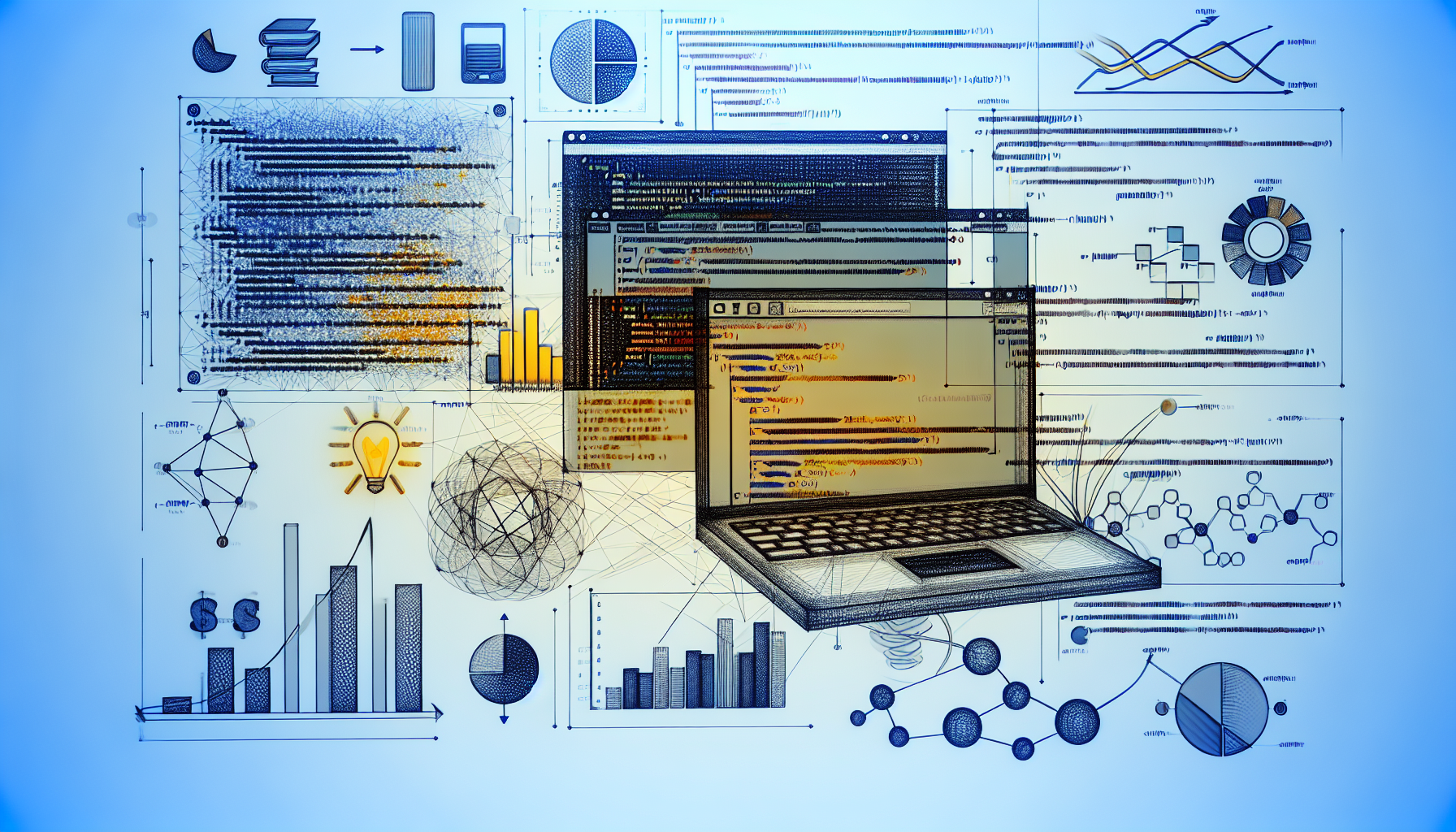
Jupyter Notebooks have become an invaluable tool for data analysts and data scientists in recent years. With their interactive interface, they facilitate a seamless blend of code execution, data visualization, and narrative text, enabling users to present analyses in a cohesive manner. The significance of Jupyter Notebooks lies in their ability to foster reproducibility and collaboration, allowing teams to share and build on each other’s work with ease.
Setting up Jupyter Notebooks is straightforward. Users can install Jupyter via Anaconda, a popular distribution that comes with numerous packages useful for data analysis, or by installing Jupyter directly using pip. Once setup is complete, users can initiate a notebook from their command line or terminal and start a kernel that runs Python code. This environment supports various programming languages, but Python remains the most widely utilized due to its extensive range of libraries, such as Pandas and NumPy, that augment data manipulation and analysis tasks.
The interactive features of Jupyter Notebooks are particularly beneficial for data exploration. Analysts can run code snippets in a cell-by-cell manner, observe immediate outputs, and iteratively refine their analyses based on real-time feedback. This interactivity encourages a more exploratory approach to data analysis, allowing analysts to visualize data using matplotlib or seaborn libraries right alongside their code. Furthermore, Jupyter provides extensive capabilities for embedding markdown, allowing users to document their thought processes and findings clearly within the notebook itself, making it suitable for presentations and sharing with stakeholders.
To effectively present analysis results, one should employ a combination of visualizations and markdown text to narrate the story behind the data. Including comments throughout the code enhances readability and clarifies functionalities. With these strategies, analysts can create comprehensive reports that not only showcase their findings but also serve as a valuable learning tool for others working with the data.
Machine learning and data analysis are intrinsically linked, each complementing the other to enhance insights derived from data. Data analysis serves as the foundational step in the machine learning process, as it involves gathering, cleaning, and preparing data for subsequent analysis. In essence, robust data analysis strengthens the performance of machine learning models, ensuring they are built upon accurate and meaningful datasets.
The data analysis phase typically includes exploratory data analysis (EDA), where researchers utilize various statistical methods and visualization tools to understand data distributions, identify trends, and detect anomalies. EDA informs the choice of machine learning algorithms by uncovering relationships within the data that can influence model selection. For example, linear regression may be suitable for predicting continuous outcomes, while classification algorithms such as decision trees or support vector machines might be more appropriate for categorical predictions.
Moreover, data analysis aids in feature engineering, which is the process of selecting and transforming variables into formats that best capture the underlying patterns. Effective feature selection can significantly enhance model accuracy by eliminating noise and irrelevant information, subsequently improving the learning algorithm’s ability to generalize from training data to new, unseen data.
The intersection of data analysis and machine learning also highlights the importance of model evaluation metrics, such as accuracy, precision, and recall. Understanding these metrics ensures that analysts can assess the performance of machine learning models and make informed decisions on how to optimize their predictions. Techniques such as cross-validation and hyperparameter tuning allow for greater refinement of models, driven by thorough data analysis.
In summary, integrating machine learning with data analysis effectively allows organizations to harness the potential of their data, turning it into actionable insights and informed decision-making, ultimately leveraging advanced analytics for strategic advantage.
Data analysis is a crucial process that requires a systematic approach to yield meaningful insights. Following best practices improves the quality and accuracy of the analysis, ultimately leading to informed decision-making. One foundational practice is data validation, which involves ensuring that the data used is accurate, complete, and consistent. This step is essential as it prevents erroneous conclusions that could arise from flawed data. Techniques such as cross-verifying data sources, checking for missing values, and assessing data distribution can substantially enhance the reliability of the analysis.
Another best practice is documenting each step of the analysis process. This includes detailing the methodologies employed, sharing the assumptions made, and noting any transformations applied to the data. Clear documentation serves multiple purposes: it provides a trail for other analysts to follow, helps in revisiting past analyses, and facilitates knowledge transfer among team members. Moreover, it assists in the review process, allowing stakeholders to understand the rationale behind specific decisions more easily.
Collaboration is also pivotal in data analysis projects. Engaging with colleagues encourages diverse viewpoints that can lead to improved interpretation and richer insights. For effective collaboration, utilizing version control systems can help track changes made by different team members, ensuring that all contributions are harmonized and organized systematically. This practice not only enhances productivity but also fosters an environment of collective learning.
Lastly, ensuring reproducibility is paramount in data analysis. Researchers should strive to share not only the outcomes but also the datasets and codes used in their analyses. Tools such as Jupyter notebooks and platforms like GitHub can facilitate this, allowing others to replicate findings and build upon existing work. Reproducibility not only bolsters credibility but also contributes significantly to the advancement of knowledge in the field of data science.

Python has emerged as a dominant language for data analysis across various industries due to its versatility and rich ecosystem of libraries. One prominent example is in the finance sector, where firms utilize Python to assess investment risks. By employing libraries such as Pandas and NumPy, analysts can manipulate large datasets with ease, thus enabling them to conduct thorough analyses of market trends, forecast stock performances, and optimize portfolios. This allows financial institutions not only to maximize returns but also to ensure compliance with regulations.
Another significant application of Python in data analysis is seen in healthcare. Hospitals and research institutions leverage Python to analyze patient data for improving treatment outcomes. Using machine learning libraries such as Scikit-learn, healthcare professionals can analyze patterns in patient records, which aids in identifying potential disease outbreaks or assessing the effectiveness of treatment protocols. Such analyses not only enhance the overall patient care experience but also assist in driving strategic decisions related to clinical practices.
The retail industry has also capitalized on Python’s capabilities for data analysis, utilizing it to optimize supply chains and improve customer experience. Retailers can analyze purchase data using libraries like Matplotlib and Seaborn to discern shopping patterns, enabling them to tailor marketing campaigns and inventory management strategies. This data-driven approach assists businesses in making informed decisions, ultimately leading to an increase in sales and customer satisfaction.
Moreover, the technology sector frequently employs Python for data analysis in user behavior analytics. By analyzing user interaction data with libraries such as TensorFlow, tech companies can enhance user experiences by personalizing content and improving product functionalities. These applications underscore the significance of data analysis using Python across multiple domains, establishing its value as an indispensable tool in contemporary business practices.
Embarking on the journey of data analysis with Python can be both exciting and daunting. Here are several actionable tips for budding data analysts to help navigate through this field effectively. First, start with fundamental online courses tailored specifically for data analysis. Websites such as Coursera, Udemy, and edX offer comprehensive courses, often taught by industry professionals. Focus on courses that cover essential libraries like Pandas, NumPy, and Matplotlib, as these tools are critical for data manipulation and visualization in Python.
Next, engaging with hands-on projects is paramount. Utilize platforms such as Kaggle, which provide datasets and a community for sharing insights and solutions. Working on real-world problems not only enhances your practical skills but also builds your portfolio, which can be beneficial for future job opportunities. As you practice, consider maintaining a GitHub repository to document your progress, as this will be an asset when seeking employment.
It is equally important to familiarize yourself with the common pitfalls in data analysis. One major mistake is neglecting data cleaning, which can lead to erroneous conclusions. Always allocate sufficient time for data preprocessing, including handling missing values and outlier detection. Moreover, avoid jumping to conclusions based solely on initial observations; instead, ensure to apply statistical methods to validate your findings.
Networking with other data analysts through forums or local meetups can also provide crucial insights and guidance. Sharing experiences and strategies can enhance your learning process. Additionally, consider reading books or blogs that focus on data science methodologies and case studies to stay updated on industry trends. By integrating these tips into your learning journey, you can set a solid foundation for your career in data analysis using Python.
In conclusion, mastering Python for data analysis requires a solid understanding of key libraries such as Pandas, NumPy, Matplotlib, and Seaborn. These essential tools not only facilitate effective data manipulation and visualization, but they also empower analysts to derive meaningful insights from complex datasets. By acquiring proficiency in these libraries, individuals can streamline their workflows and enhance their analytical capabilities. As the field of data science evolves, familiarity with machine learning frameworks like Scikit-learn also becomes increasingly beneficial. This understanding further broadens the scope of analysis, allowing professionals to implement predictive models and advanced statistical techniques effectively.
However, the journey does not end here. The landscape of data analysis is dynamic, and staying updated with the latest trends, tools, and best practices is crucial. Continued learning can take many forms, including online courses, webinars, and participation in data science communities. Engaging with peers through forums or attending local meetups can provide invaluable insights and foster collaboration. Furthermore, practical experience is key; tackling real-world projects not only solidifies theoretical knowledge but also builds a robust portfolio that showcases one’s skills to potential employers.
For those ready to delve deeper, exploring specialized areas such as machine learning, deep learning, or big data technologies can greatly enhance one’s career prospects. These fields offer exciting opportunities to apply Python programming skills in innovative ways. As you progress, remember that learning is a continuous process. Embracing challenges, seeking knowledge, and sharing experiences will undoubtedly enrich your journey in the expansive domain of data analysis and science. Thus, by embracing a mindset of lifelong learning and exploration, you can fully harness the potential that Python offers in addressing complex data challenges.
Looking to advertise, promote your brand, or explore partnership opportunities?
Reach out to us at
[email protected]
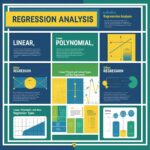
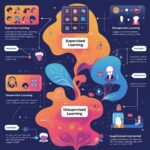
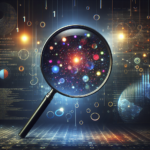
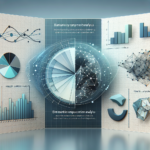


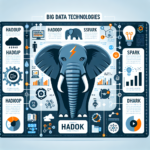





Chose where you want to study, and we will let you know with more updates.